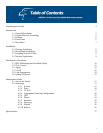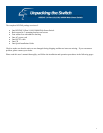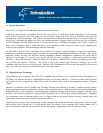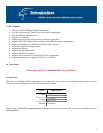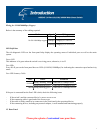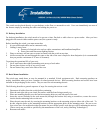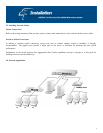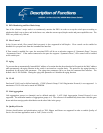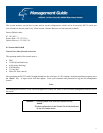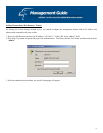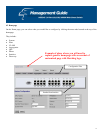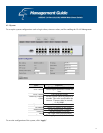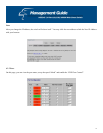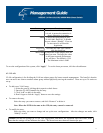
3.1 PHY Monitoring and Port Mode Setup
One of the software’s major tasks is to continuously monitor the PHYs in order to set up the switch ports according to
whether the link is up or down, and in the latter case, what the current speed, duplex mode and pause capabilities are. The
PHYs are polled every 100 ms.
3.2 Flow Control
In the 16-port switch, flow control (back pressure) is also supported in half duplex. Flow control can be enabled or
disabled on a per-port basis from the command line interface.
If flow control is enabled for a port, the associated PHY will be set to advertise support of “Symmetric Pause”, but not
“Asymmetric Pause”. If the station connected to the port also supports “Symmetric Pause”, flow control will be enabled
on the switch port.
3.3 Aging
To prevent that an automatically learned MAC address of a station that has been detached will remain in the MAC address
table permanently, the aging function in the switch is activated on a regular basis. The period for the aging function is
determined by the aging time parameter. The aging time parameter can be set from the command line interface. The
default value is 300 seconds. Setting the aging time parameter to 0 disables the aging function.
3.4 VLAN
Port-based VLAN can be defined statically. GVRP (Generic/Group VLAN Registration Protocol) is not supported. A
maximum of 24 VLANs can be stored in EEPROM.
3.5 Link Aggregation
Link aggregation groups (or channels) can be defined statically. LACP (Link Aggregation Control Protocol) is not
supported. The maximum number of aggregation groups is 8. The software will automatically detect that a link has gone
down and then reassign packet distribution on the other links in the group.
3.6 Quality of Service
Various classifications and prioritizations such as TOS, Shaper and Storm are supported in order to enable Quality of
Service for real time applications such as VoIP (Voice over IP).
10




